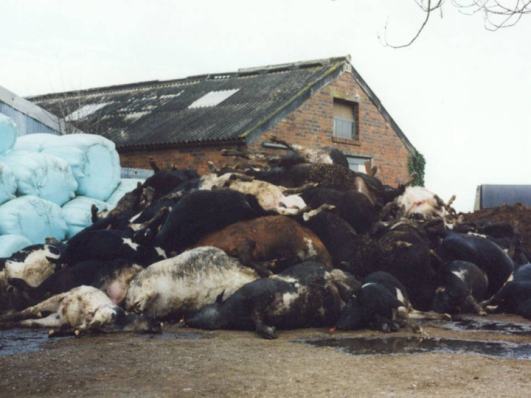Foot and Mouth Disease Lifescapes’ – Maggie Mort, Institute for Health Research, Lancaster University
In May 2003, two years and three months after the outbreak of the world’s worst epidemic of Foot & Mouth Disease, a small group of people gathered on a bleak windy former airfield site to commemorate the slaughter and burial of more than one million farm animals. Great Orton was the largest disposal site in Cumbria, the county in Britain worst hit by the disaster. The former airfield became the scene of a massive disposal operation in 2001 after the British army was brought in to handle a crisis prompted by the sheer scale of the slaughter. The mass slaughter, often of healthy animals taken out under the contiguous cull, ‘dangerous contact’ rationales, or simply misdiagnosed, was all the more horrific because of its being out of place and out of time. This talk explores some of the alterations and disruptions to places, and the sense of place, enforced by the 2001 disaster. Such alterations involved both the symbolic/exotic, as in the memorial site at Great Orton or the acquisition of the ‘culled’ identity, and the everyday nexus of people/place/work routines. Combined, such disruption to so many aspects of individual and community lifescapes created a deep sense of disorder:
“There was no normality, normality had gone.” The term lifescape is used as a vehicle for the complexity of spatial, emotional and ethical dimensions of the relationship between landscape, livestock, farming and rural communities.
Download >The Foot & Mouth Disease Lifescapes presentation
Filed under: animals, FMD, proximities, workshop 3 | Tagged: health, system |









Leave a comment